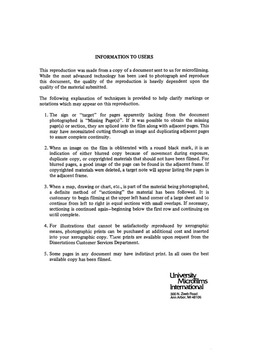| dc.contributor.author | Shapiro, Gary Louis, | en_US |
| dc.date.accessioned | 2013-08-16T12:29:21Z | |
| dc.date.available | 2013-08-16T12:29:21Z | |
| dc.date.issued | 1985 | en_US |
| dc.identifier.uri | https://hdl.handle.net/11244/5333 | |
| dc.description.abstract | Following the methods of Gardner and Gardner 1969 and Fouts 1973 , ten signs (American Sign Language) were trained to four juvenile orangutans. None of the subjects acquired all of the signs even after 2400 trials distributed over 15 months. However, all of the subjects acquired some of the signs. An analysis of variance of performance measures indicated that some subjects learned significantly faster than others and that some signs were easier to acquire than others. Two caged animals learned signs significantly faster than did two uncaged ones, though this was probably due to the exceptional scores of one individual. Three falsifiable hypotheses to account for the variance in sign performance were evaluated. Two hypotheses were supported: (1) Motor differences in the gestural aspects of the sign had a significant effect on sign performance and (2) selective attention to the sign's referent had a positive relationship to the performance of the sign. The hypothesis that pre-existing behavior in the species' natural behavioral repertoire would facilitate sign learning was not supported. | en_US |
| dc.format.extent | [ix], 63 leaves : | en_US |
| dc.publisher | The University of Oklahoma. | en_US |
| dc.subject | Orangutan. | en_US |
| dc.subject | Sign language. | en_US |
| dc.subject | Psychology, Experimental. | en_US |
| dc.title | Factors influencing the variance in sign learning performance by four juvenile orangutans (Pongo pygmaeus) / | en_US |
| dc.type | Thesis | en_US |
| dc.thesis.degree | Ph.D. | en_US |
| dc.note | Source: Dissertation Abstracts International, Volume: 46-06, Section: B, page: 2100. | en_US |
| ou.identifier | (UMI)AAI8518306 | en_US |
| ou.group | College of Arts and Sciences::Department of Biology | |
